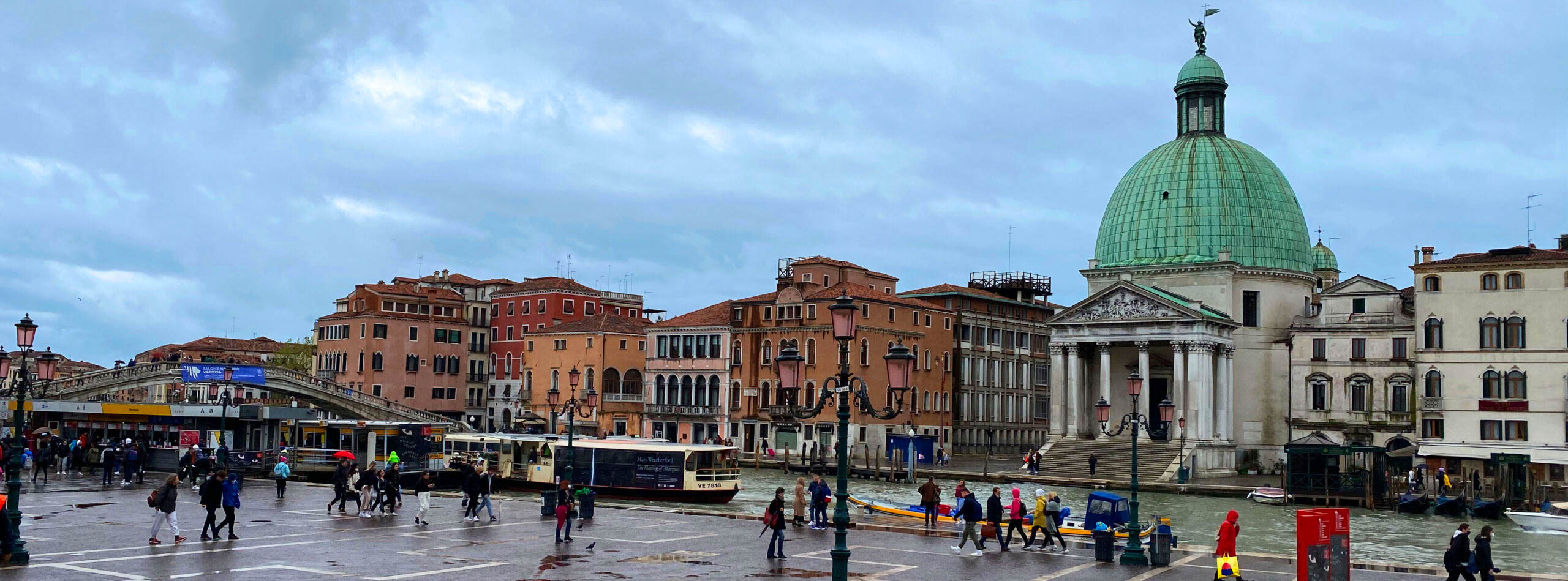
During our approach and when we exited the train station, we quickly saw why Venice is called “The Floating City” or “City of Canals.” Widely known for its gondola rides, you don’t quite understand the infrastructure and the thriving culture of this city until you are among it. Everywhere you look, there is a water channel, bridge, or boat. One of the most fascinating things to watch while in Venice is the trash pickup and food deliveries to restaurants.
While most travel is by boat, we found it was just as beneficial to explore the main island on foot. By meandering the alleyways and bridges to your ultimate destination, you are bound to find a hidden gem along the way. You really cannot get lost on foot. The main island is only 12 kilometers wide, but you do feel like you are in a maze. You could, however, potentially get lost in the boat traffic. The boat taxis are moving in all directions, and if you are not paying attention, you could jump on a boat that turns the opposite way of your destination.
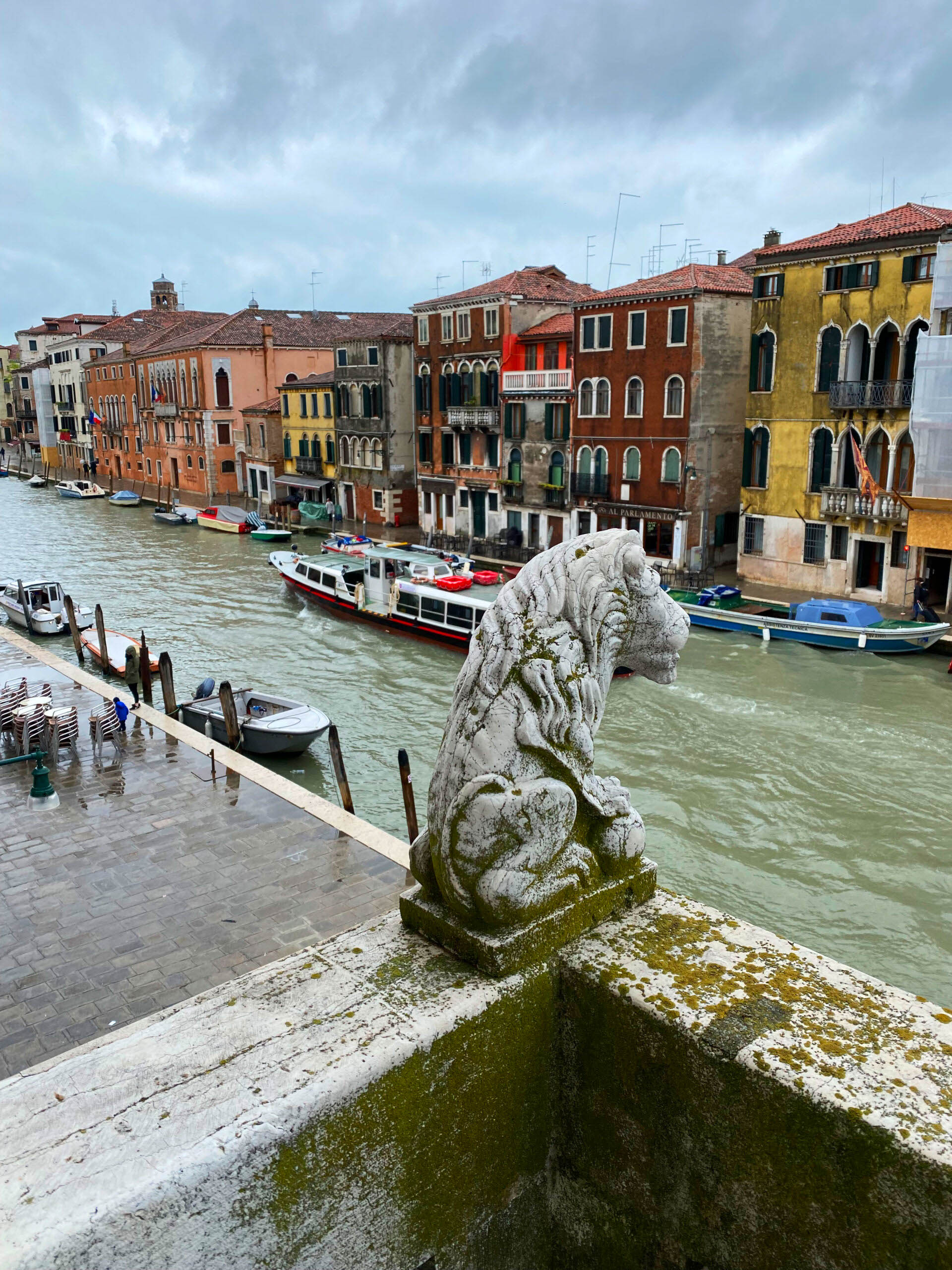


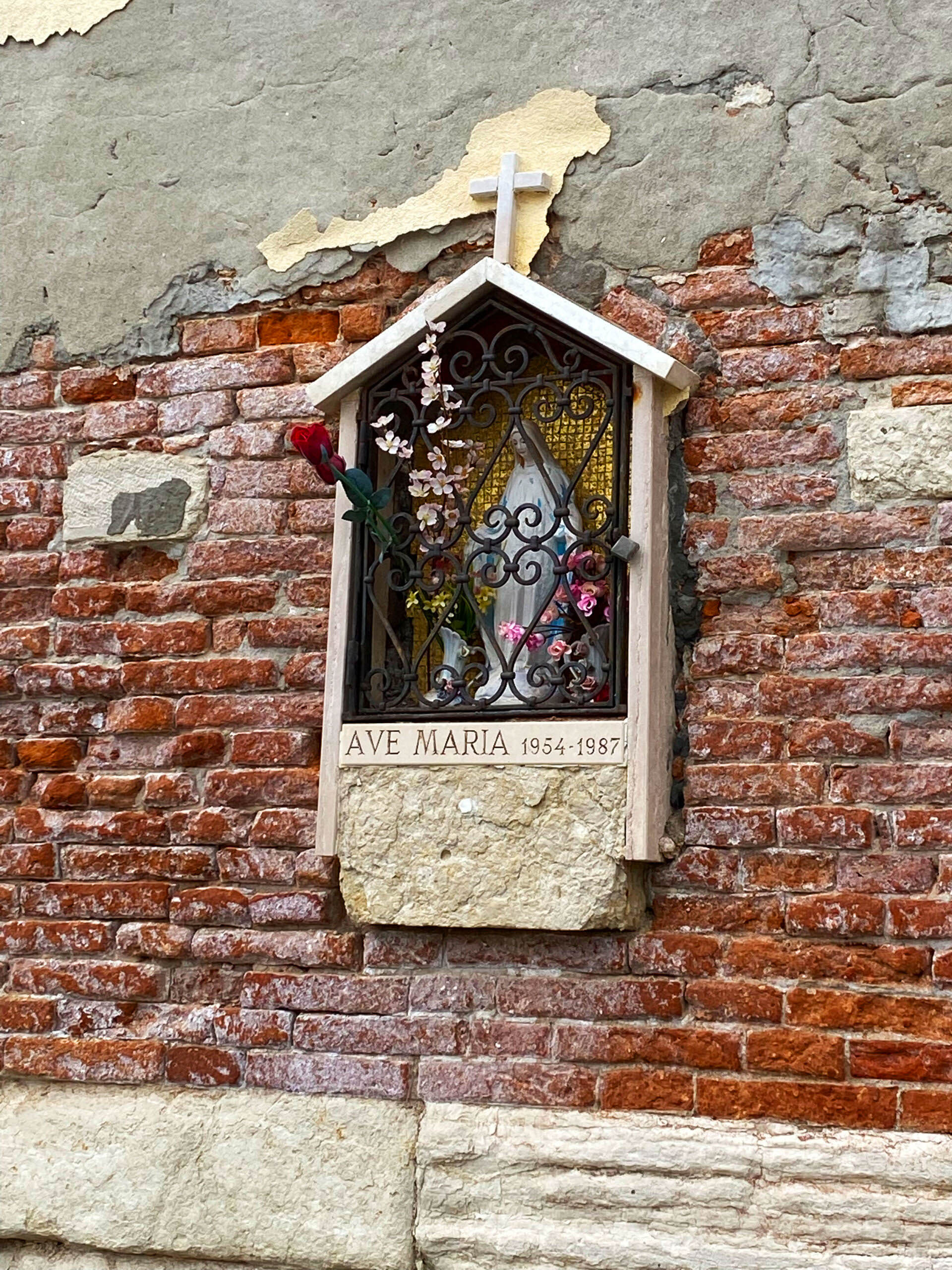
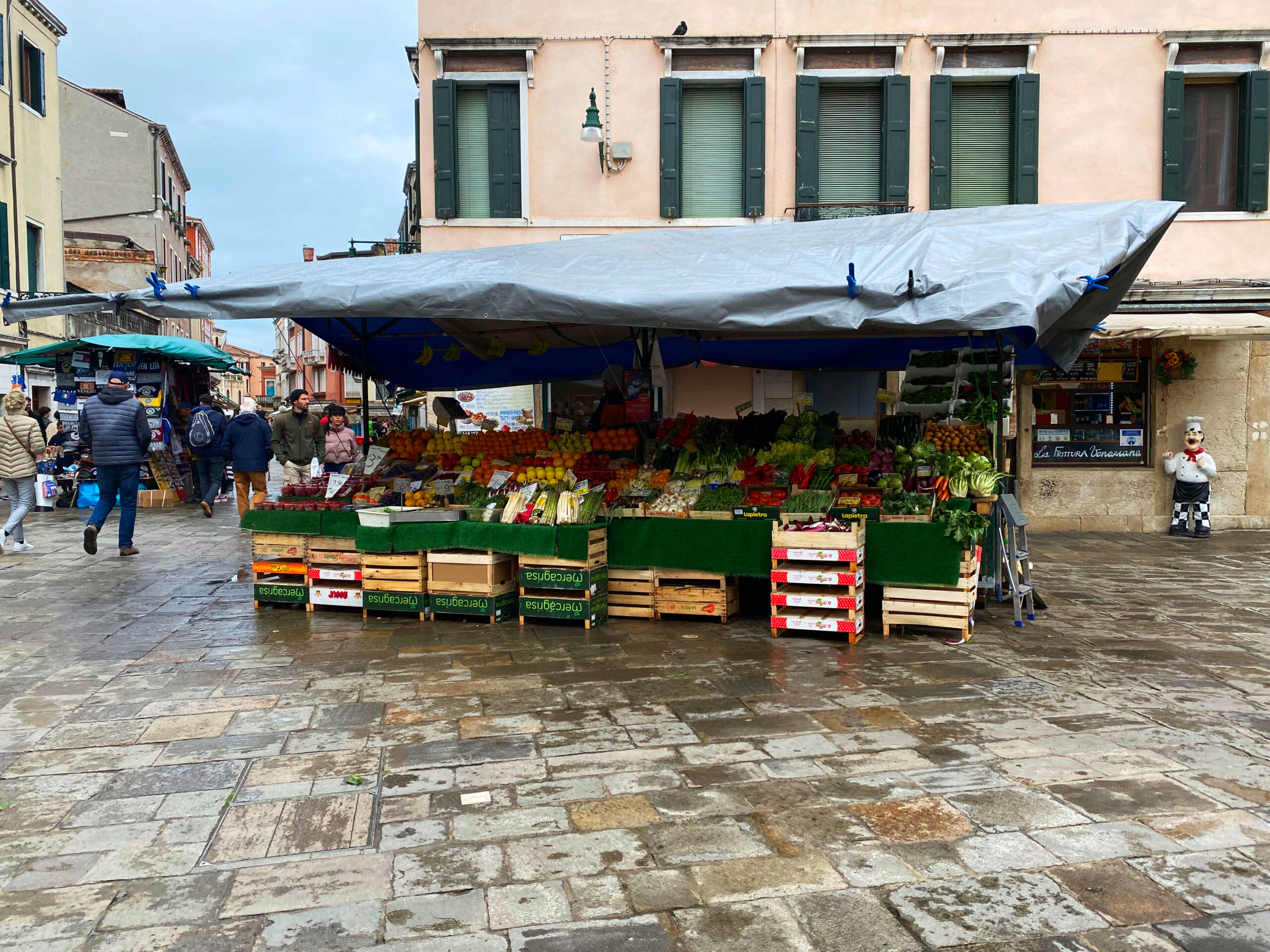
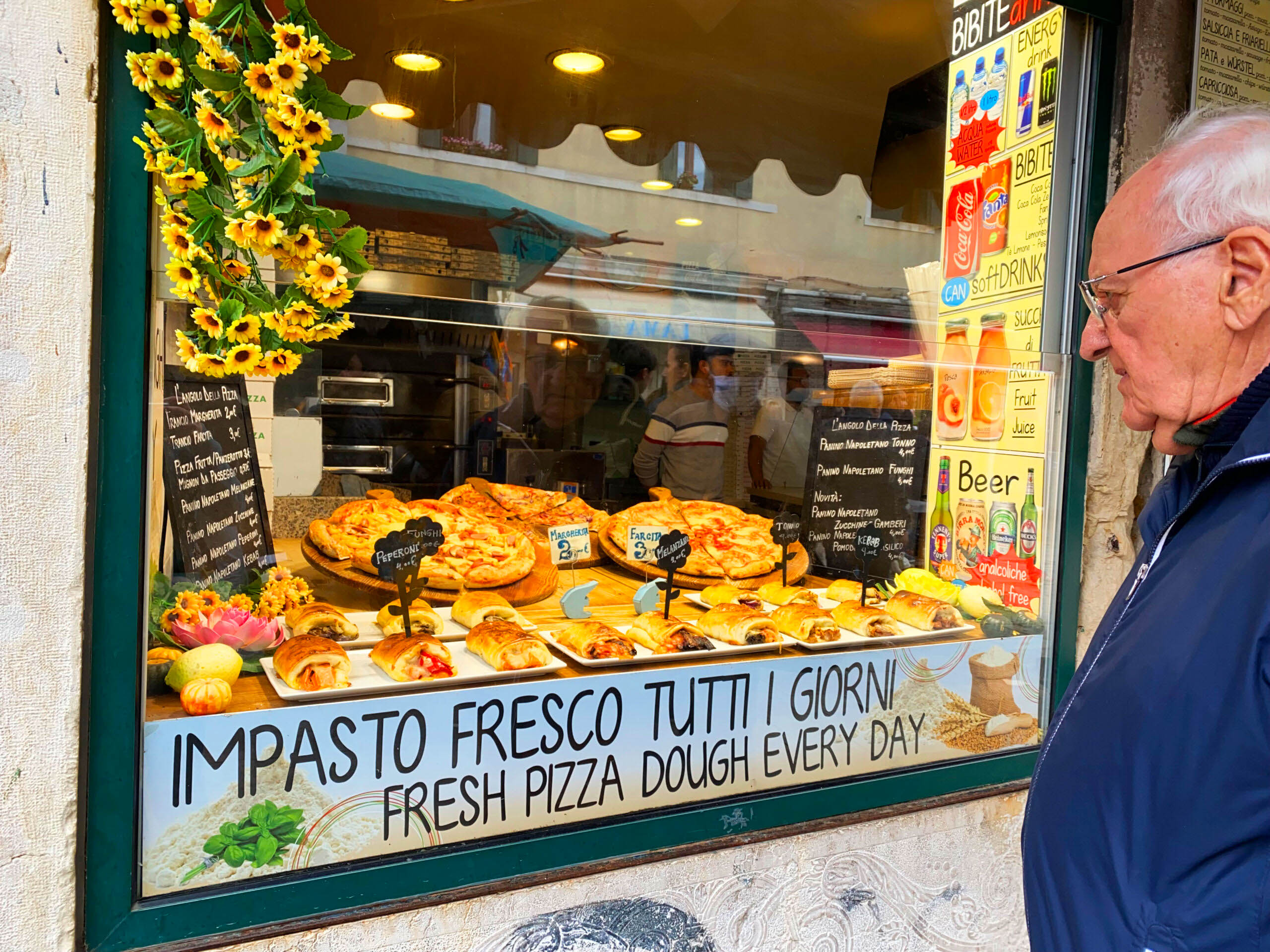
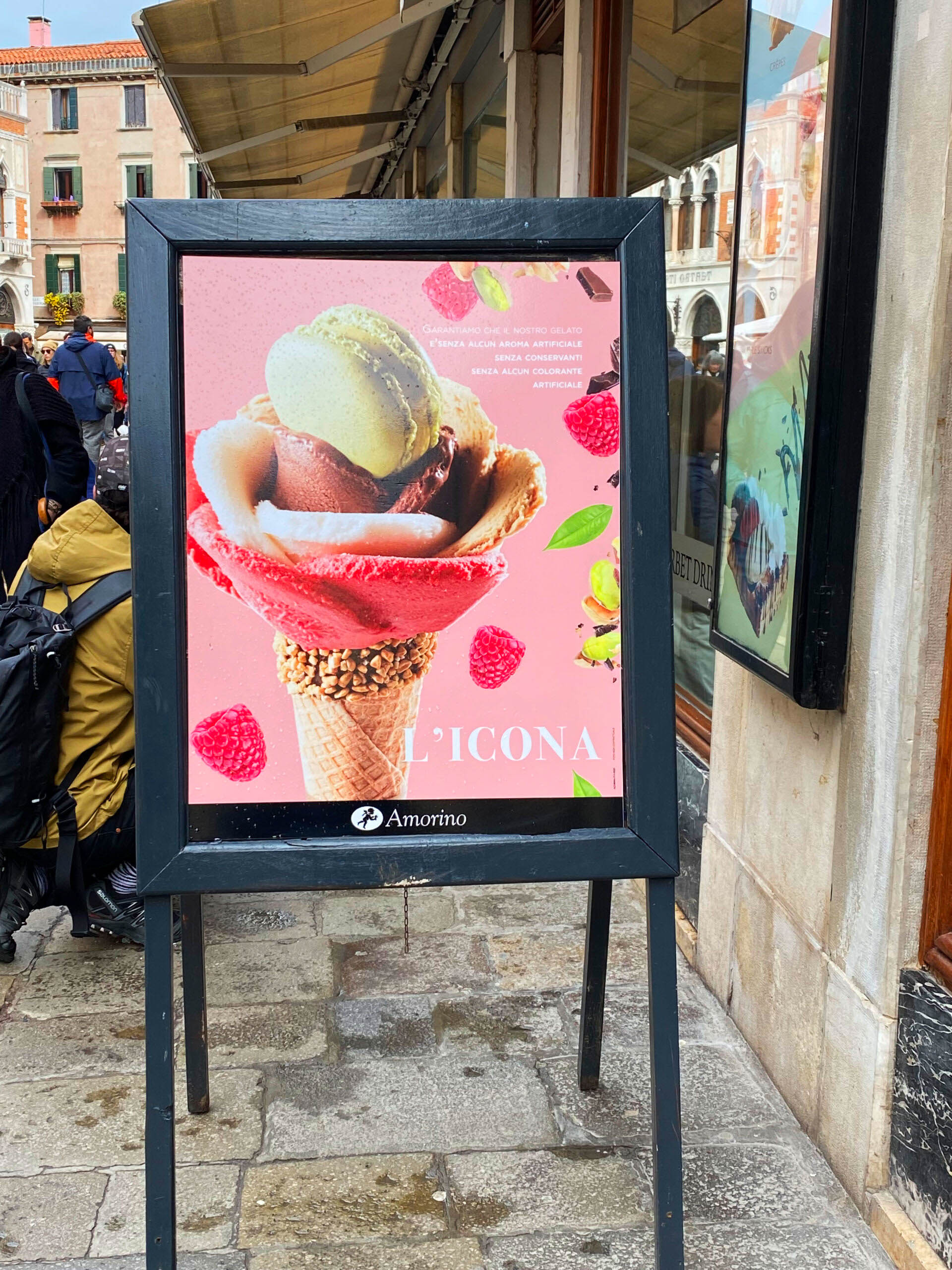
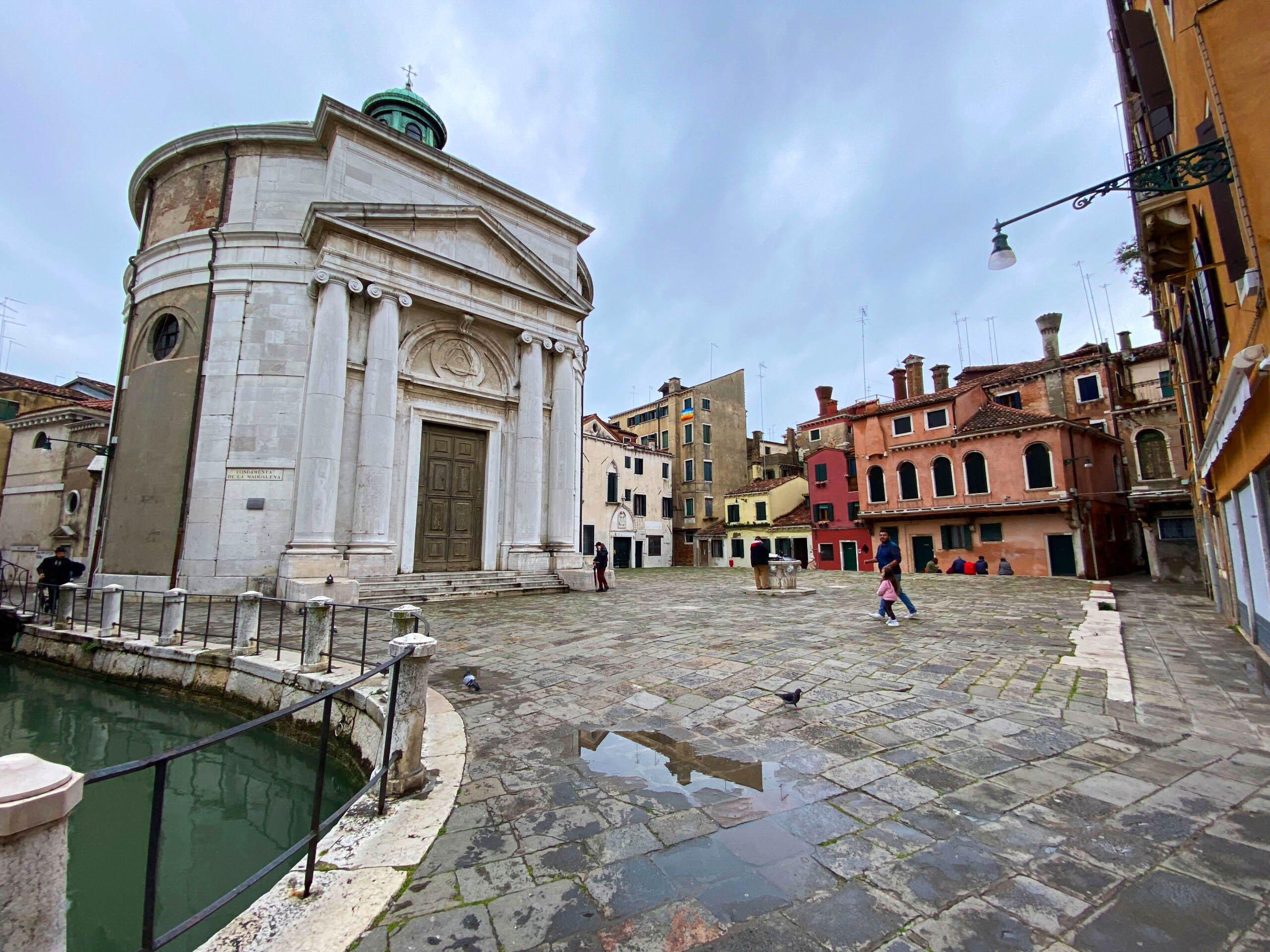
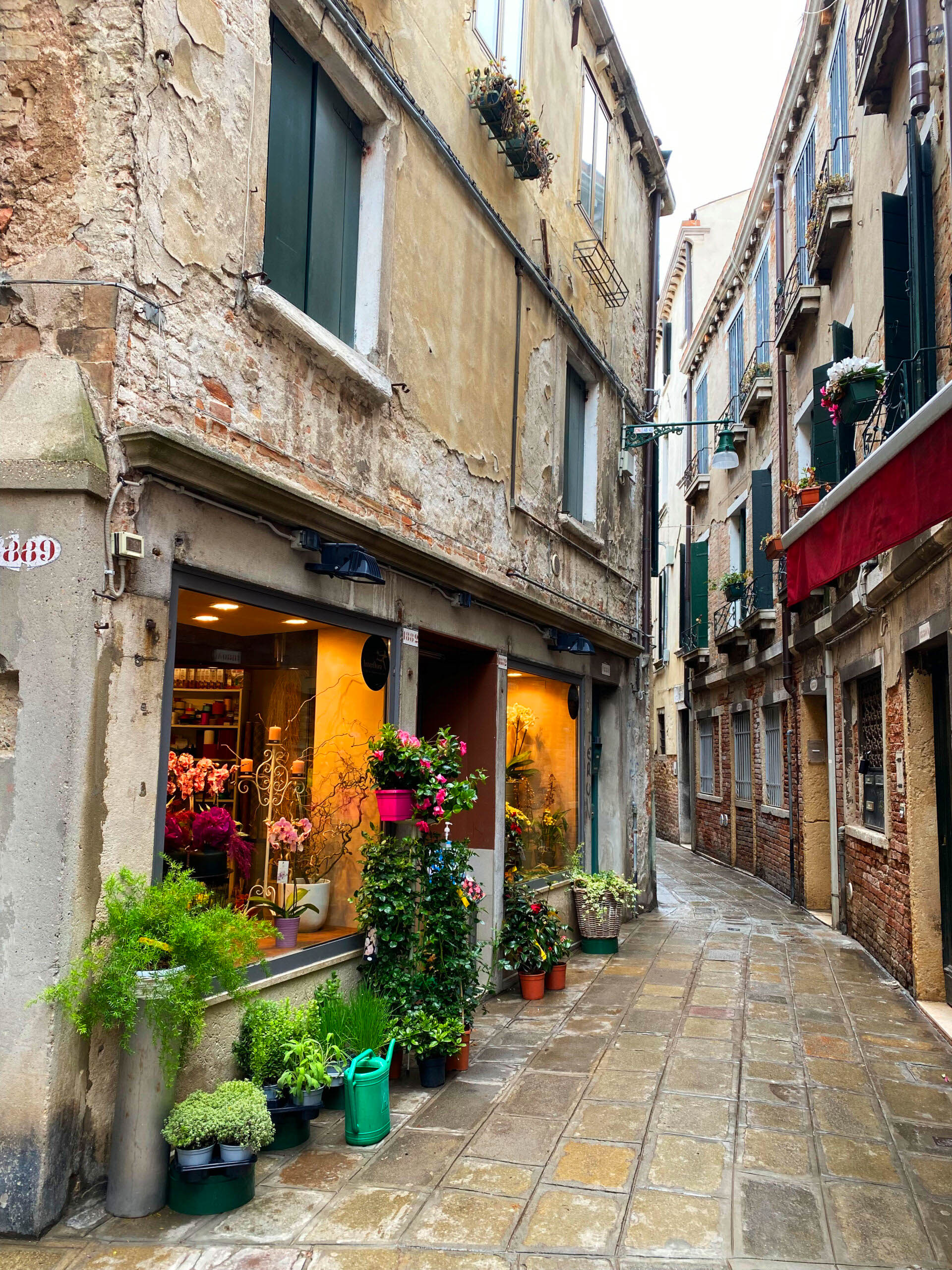
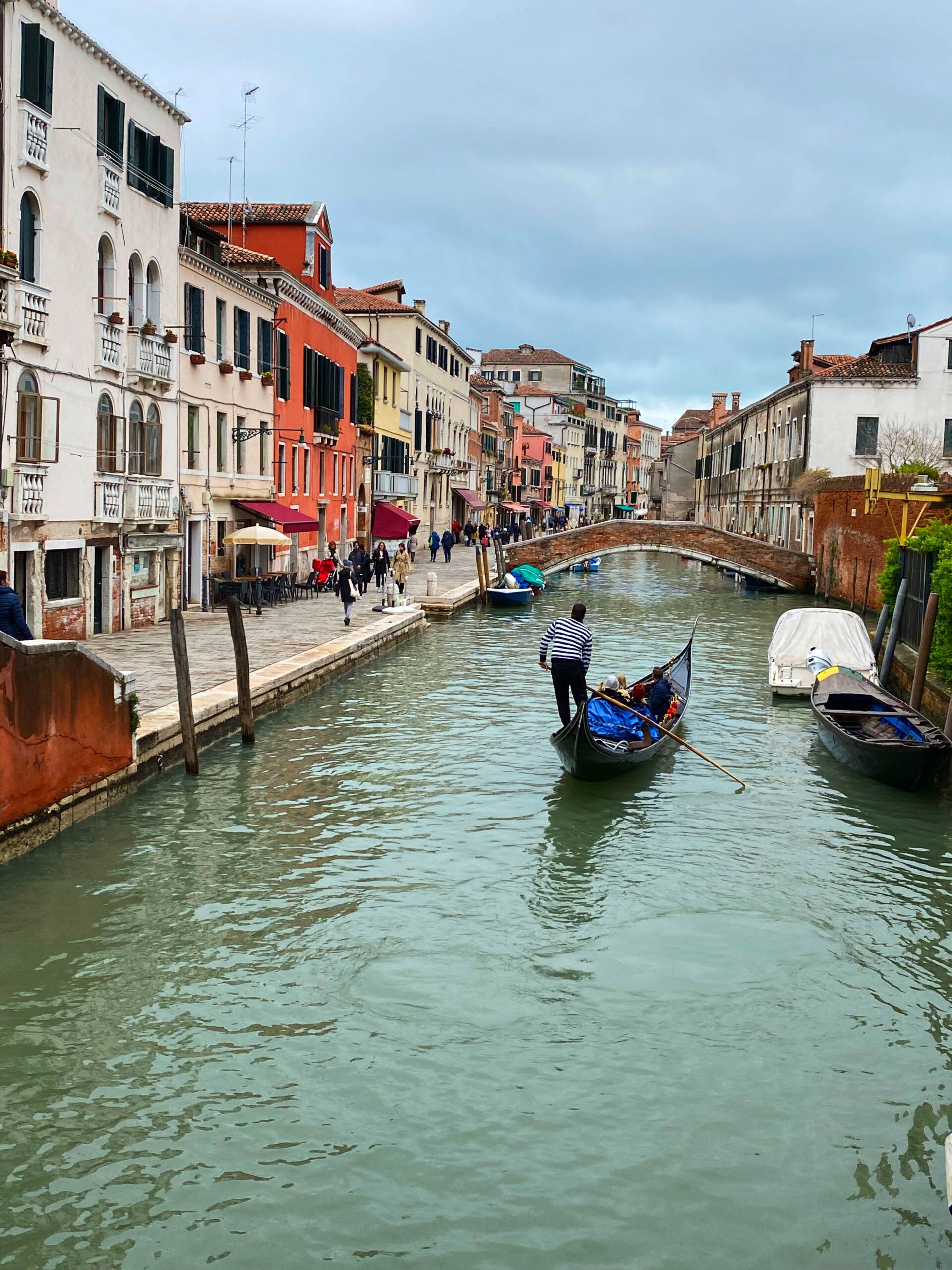
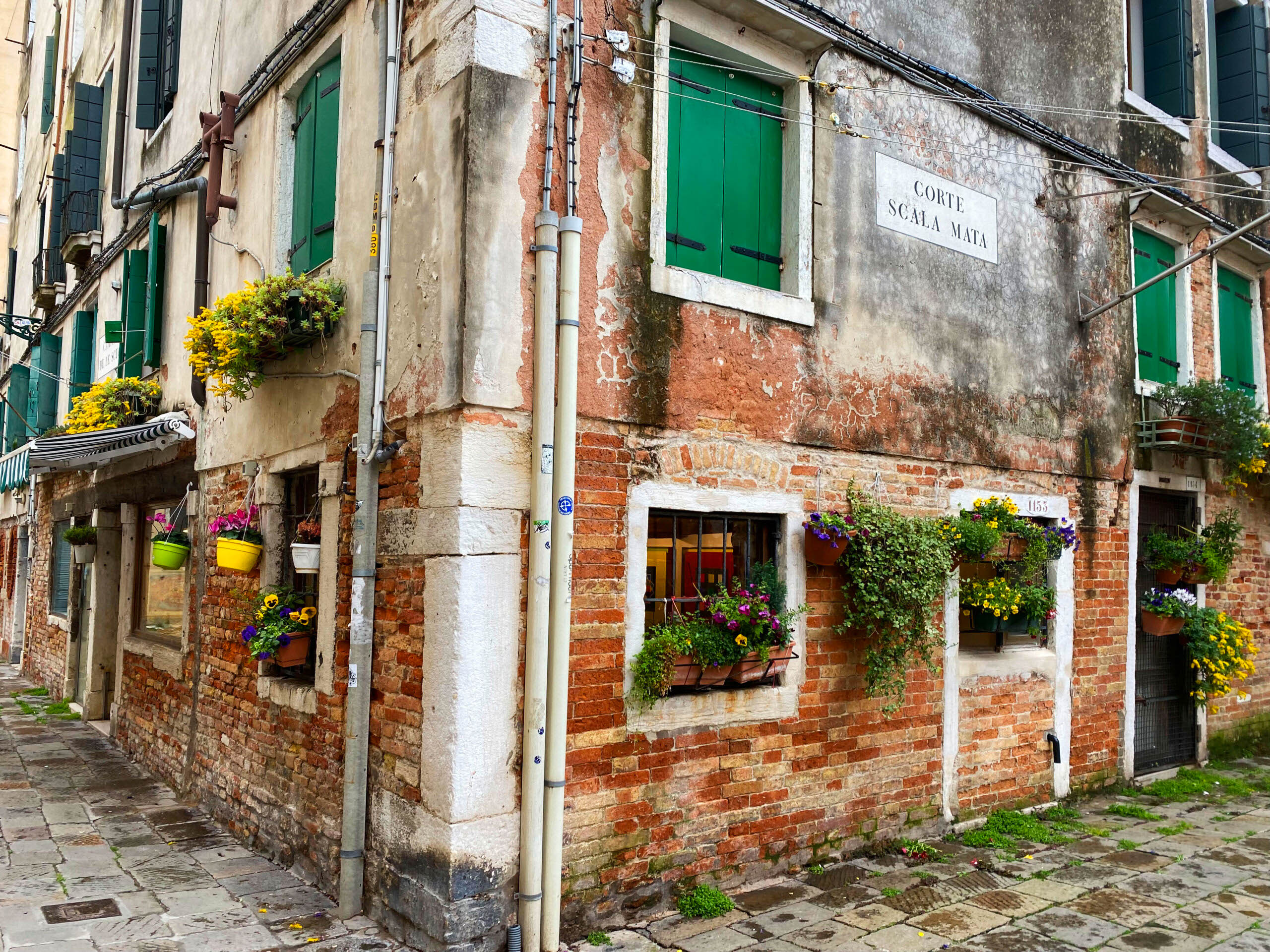

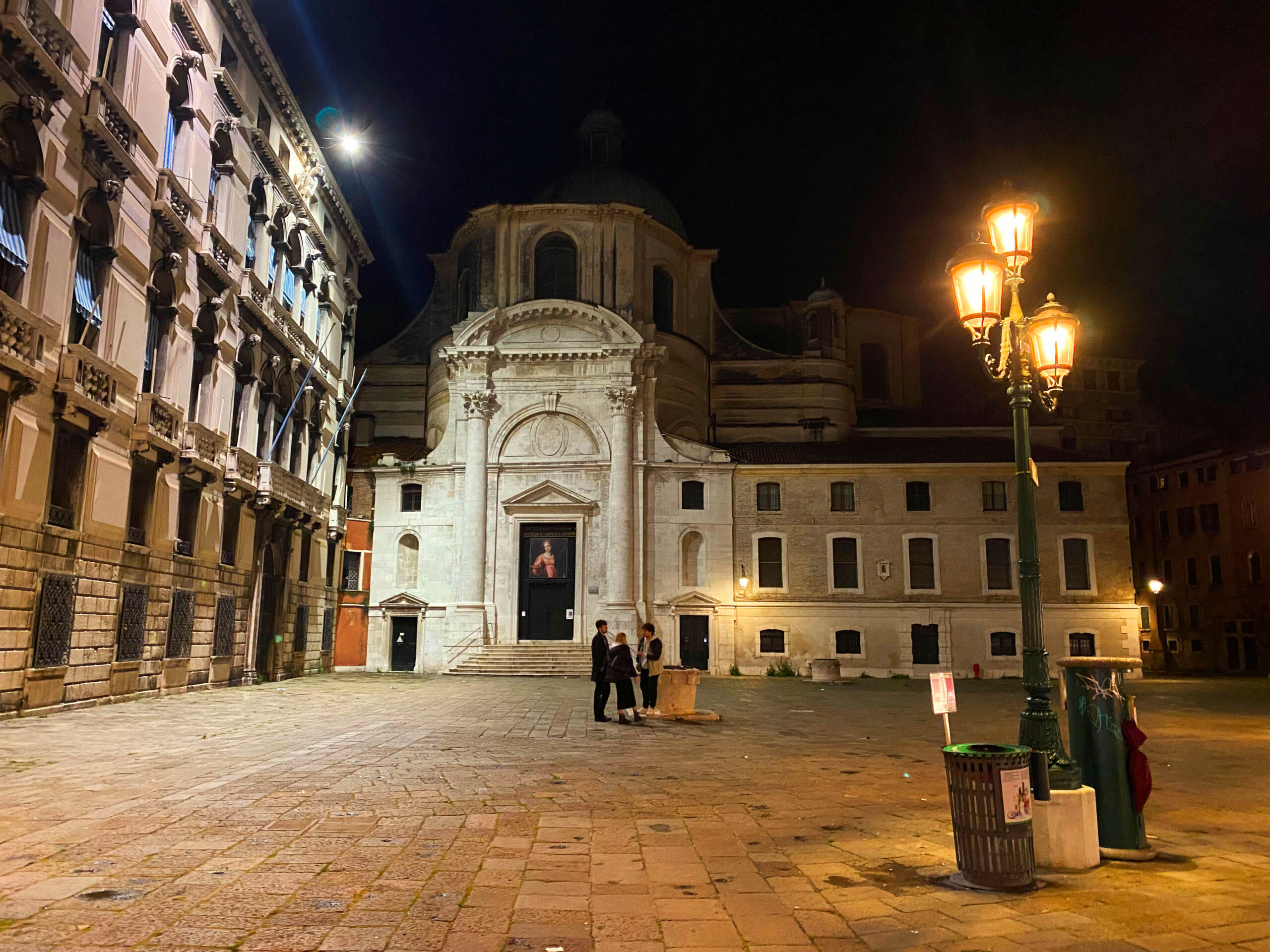
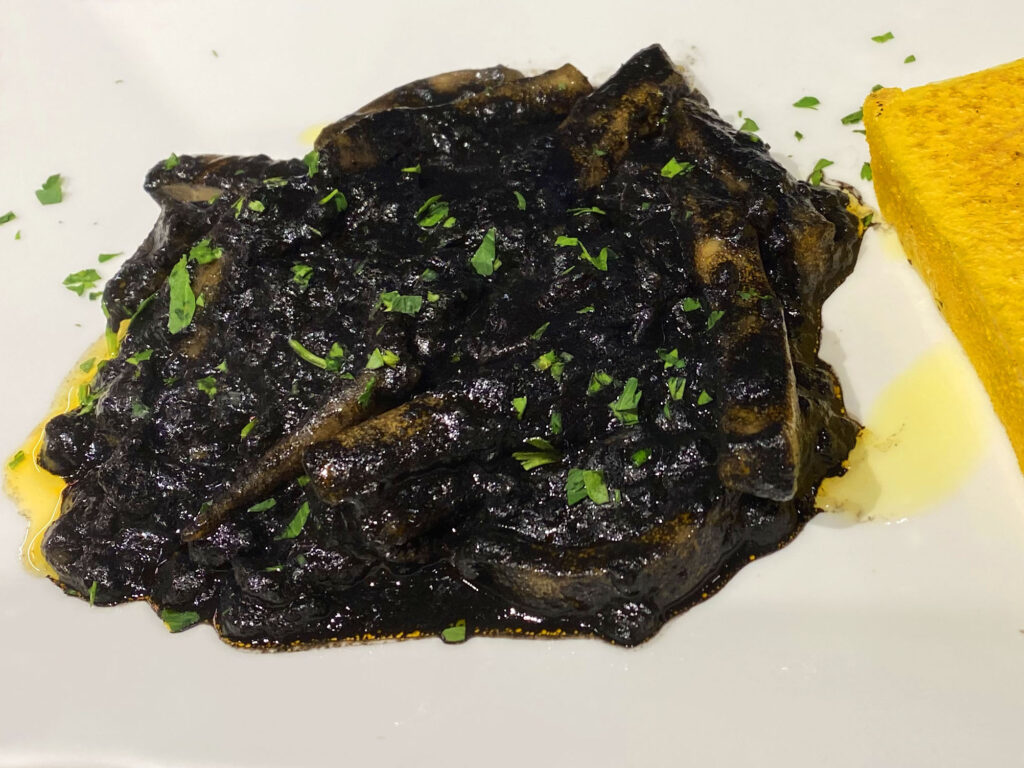
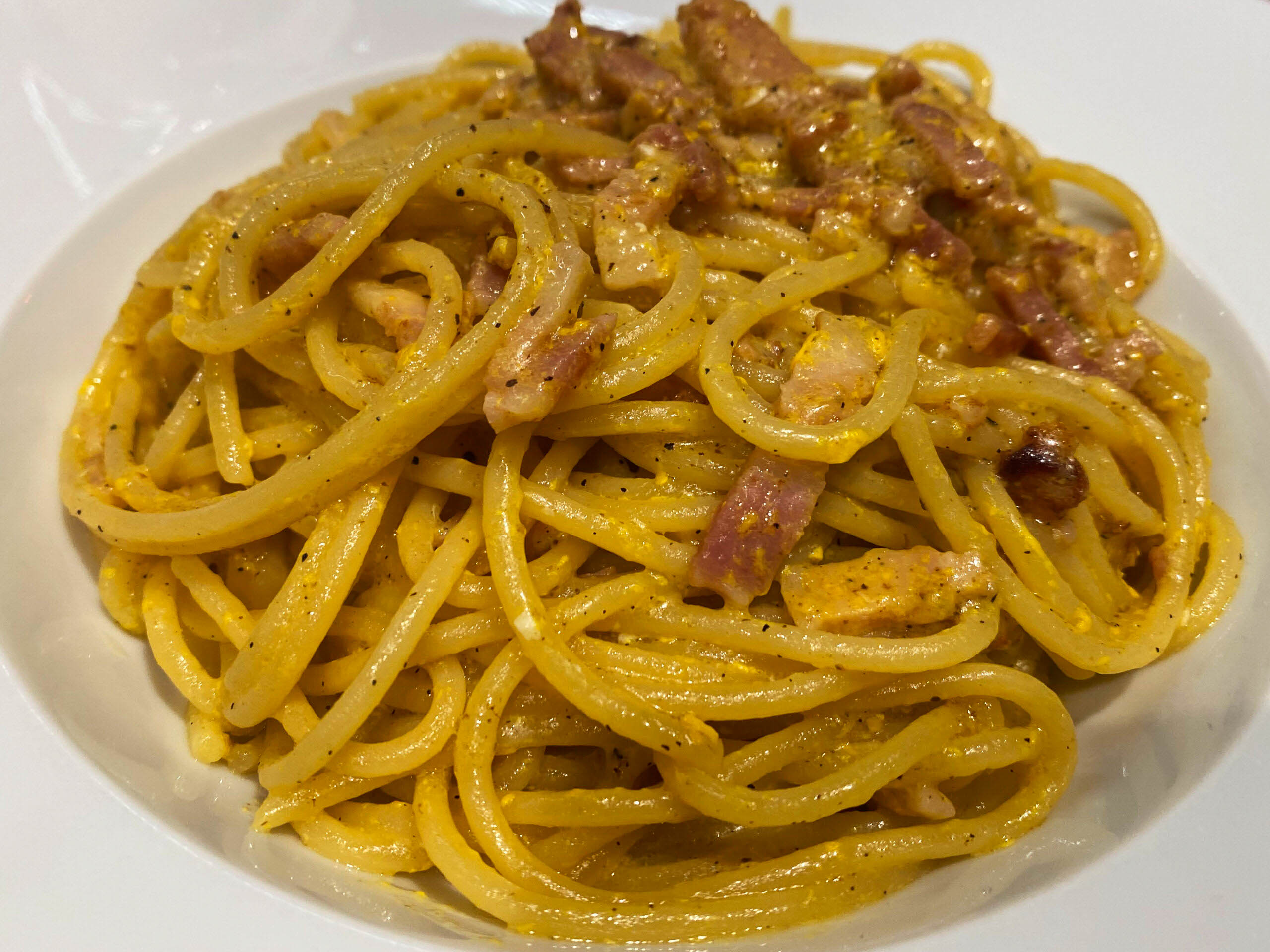
Cannaregio
We chose to stay in Cannaregio, a 16th-century Jewish Ghetto, where the canal met the edge of the island. It was a quiet section with an easy walk to late night restaurants and bars and the perfect distance from the busy train station. We meshed in with the late night crowds (as much as Americans can) and ate dinner twice around 10pm. We were adventurous and ordered pasta in squid ink, a Venetian seafood specialty. We also discovered out of all the regions of Italy that we visited, we had the best pizza in the Cannaregio district.
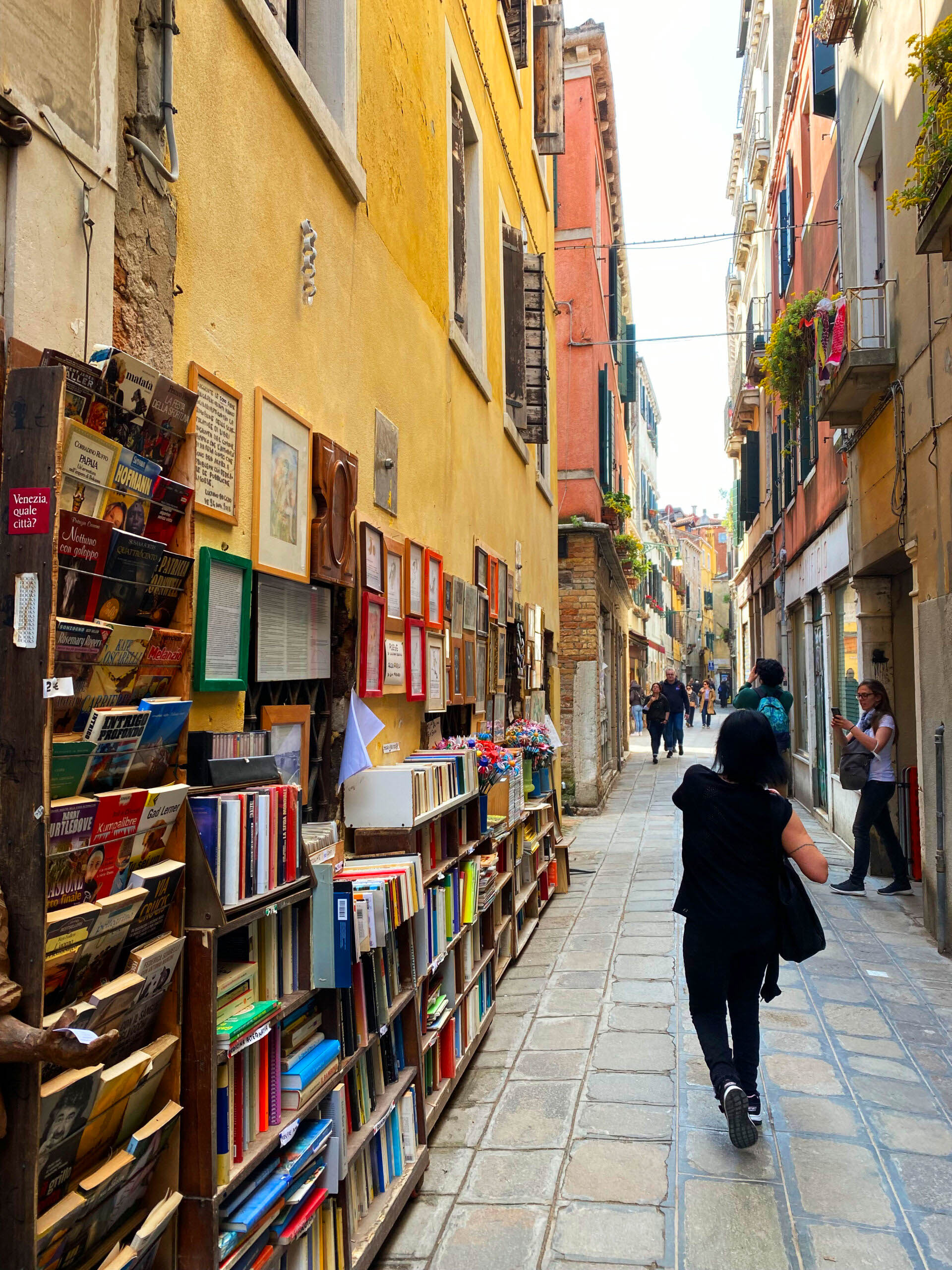
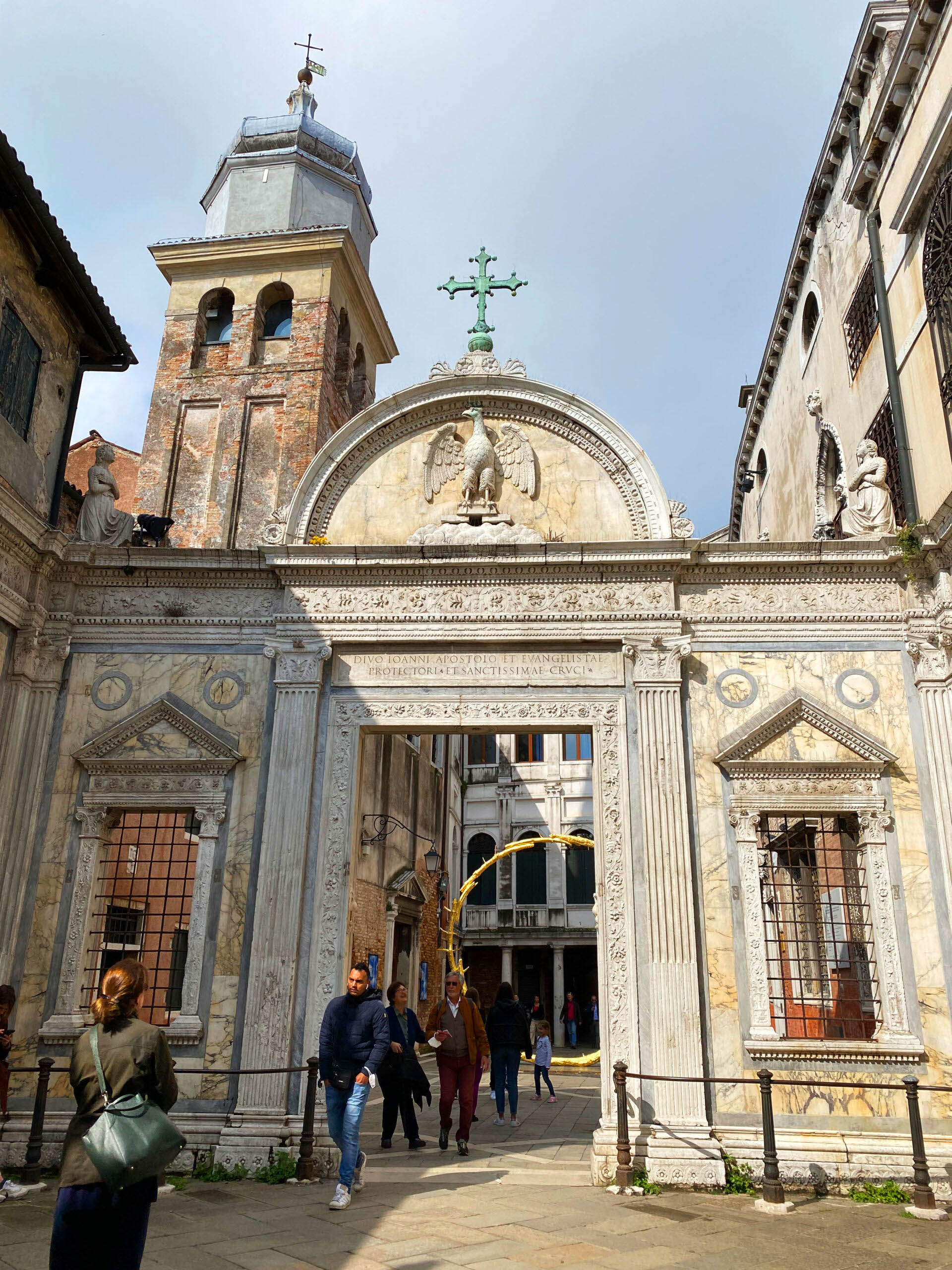
San Polo
We took a short boat ride to San Polo, Venice’s oldest district, just south of Cannaregio. We ultimately wanted to go to the San Marco district, but realized the boat was going to go around the entire main island, so we decided it was shorter to walk through the San Polo district and get off at the first stop. Luckily on our walk, we discovered a few interesting stops.
San Giovanni Evangelista
The art installation of a golden crown of thorns is what caught our eyes. We knew there was some important message trying to be given here, but this building was not on my radar. This Great School (Scuola Grande) is known for once having fragments of the true cross, the cross in which Jesus was crucified on. You can visit their museum of many artworks, some of Bellini and Titan.
Basilica S. Maria Gloriosa dei Frari
Frari is the largest church in Venice and was built in the 1330s. Elaborately designed chapels align the left and right sides while you enter the church. When you arrive at the back of the church close to the alter, choir stalls align each side with two organs. In the church, there are works of Bellini, Donatello, and Titan (whom is buried there).
Rialto Bridge (Ponte di Rialto)
Rialto Bridge joins the San Polo and San Marco districts. While crossing, you can snap a beautiful photo of the Grand Canal. You do have to juggle through many tourists, but the iconic view is worth it.
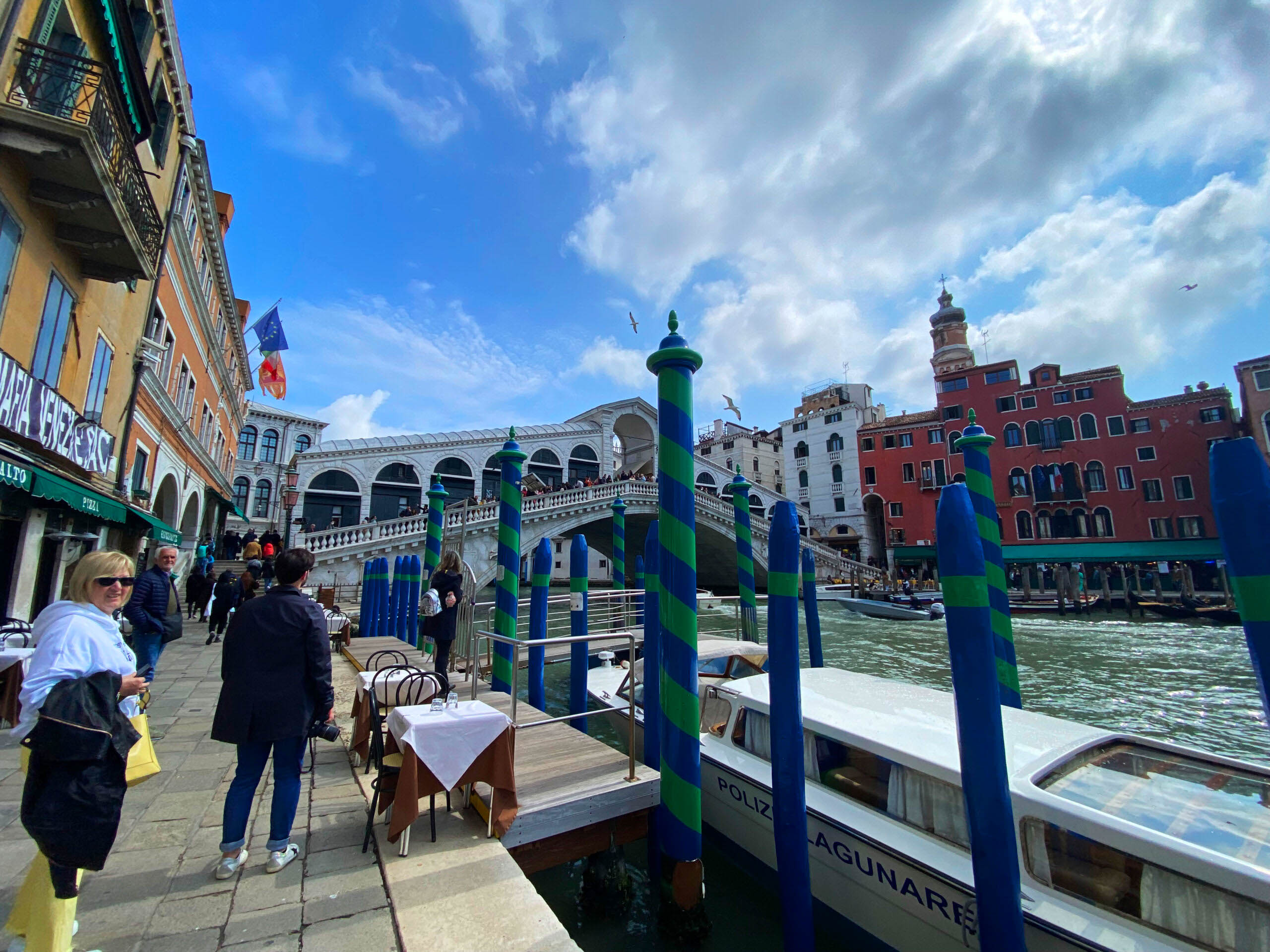

San Marco

The San Marco district is considered the heart of Venice and is where you can see Venice’s most famous buildings and architecture.
Piazza San Marco
Piazza San Marco, or St. Mark’s Square, is Venice’s public square. On the east side you will find St. Mark’s Campanile (clocktower) and St. Mark’s Basilica with the gothic Doge’s Palace attached to its right side. The palace was once the residence of the Doge of Venice, the leader of the former Republic. You can enter any one of these buildings by purchasing a ticket, and you can climb the clocktower, the tallest structure in Venice, for skyline views. If you walk around to the right side of the palace to Ponte della Paglia, you can get a view of the Bridge of Sighs (Ponte della Paglia). This enclosed bridge gave convicts one last look at daylight and the city’s lagoon before entering the Duke’s prison below.
On the east side of Piazza San Marco, you will find Caffè Florian, a 1720s coffee house. It is the oldest coffee house in Italy and one of the oldest in the world. Casanova and Charles Dickens were frequent visitors, among many other notable people. We sat in the Chinese Room, but there is also the Hall of Senate, the Oriental Room, the Hall of Season, and the Liberty Room. Each tea room is decorated differently and has its own characteristics. My most memorable time in Italy was sitting at this cafe. Maybe it was the feeling of being on a set for a classical movie and sitting in a Pompadour-style tea room with a violinist playing outside the window. Or maybe it was the iced coffee; one of the most amazing things I have ever tasted in my life. The prices are high, but the experience you get from it is worth every centesimo.
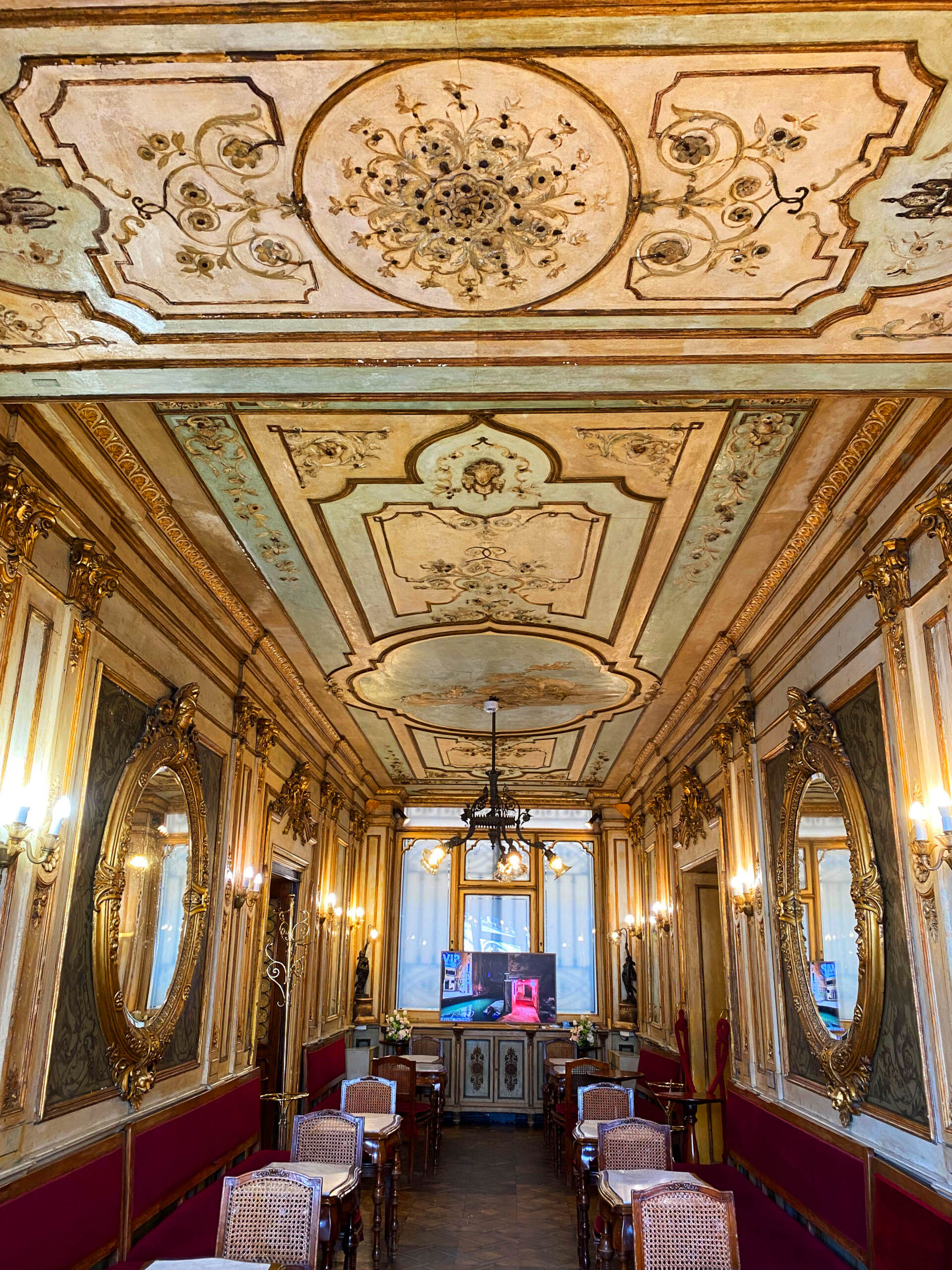
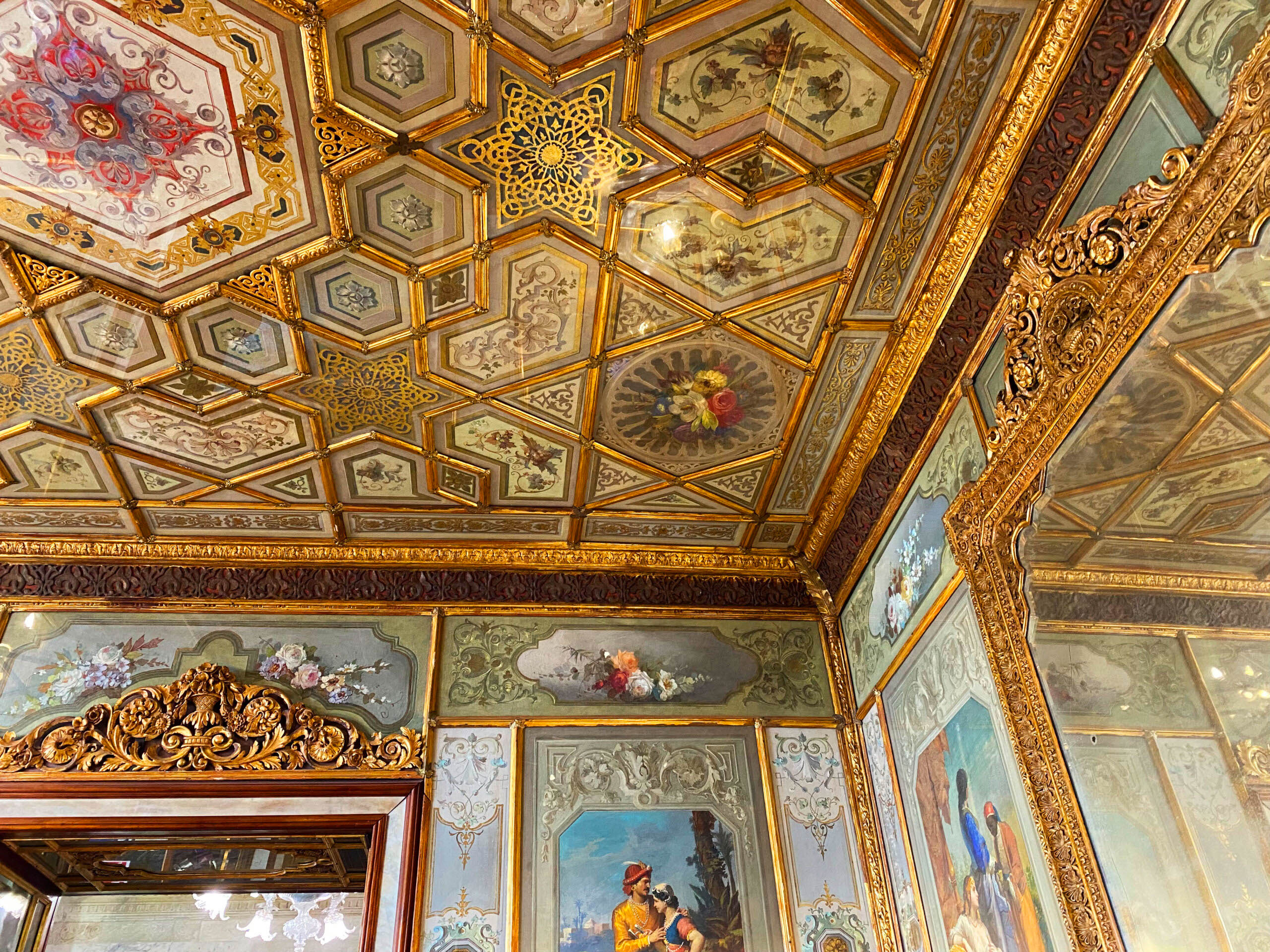
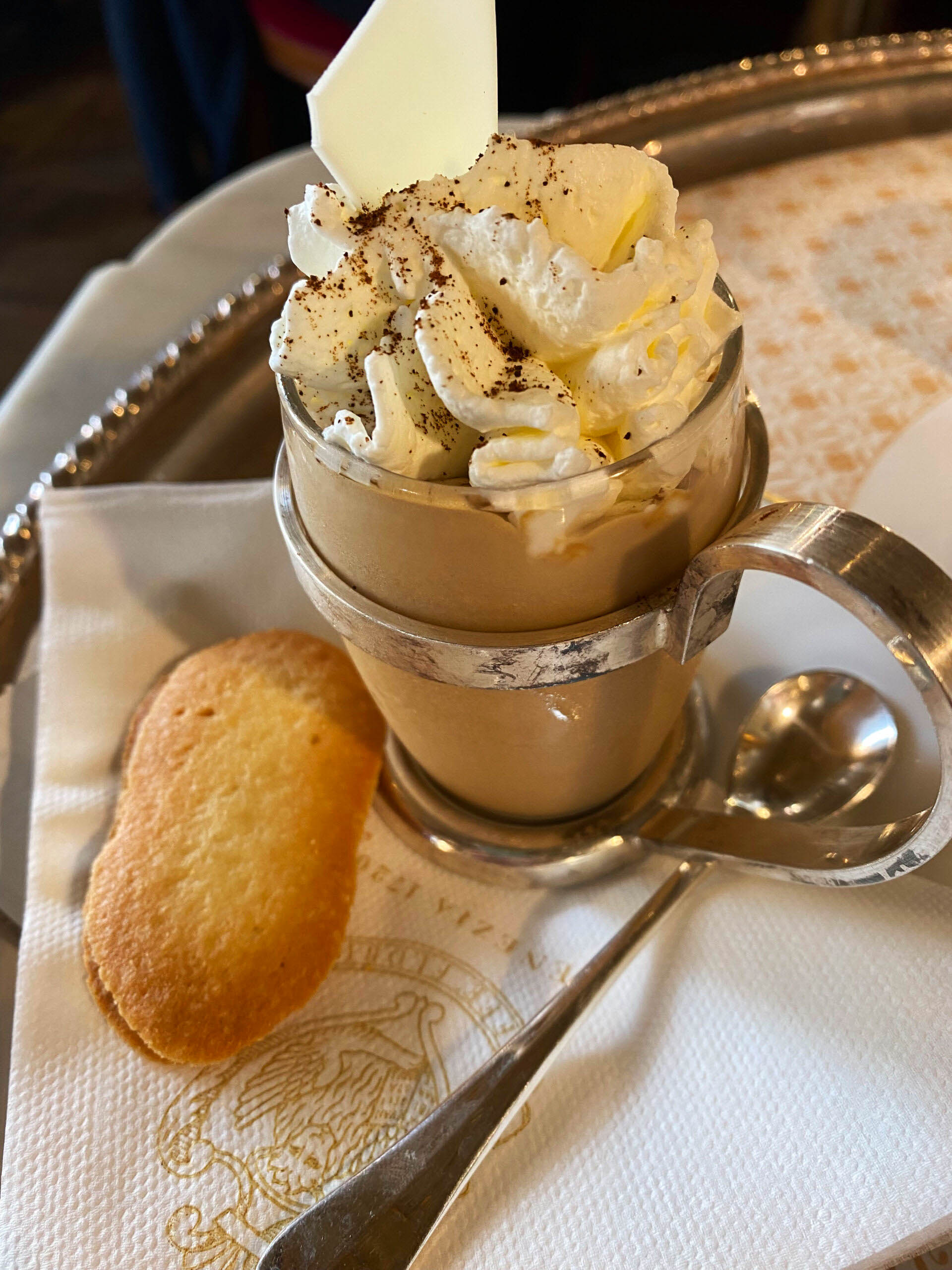
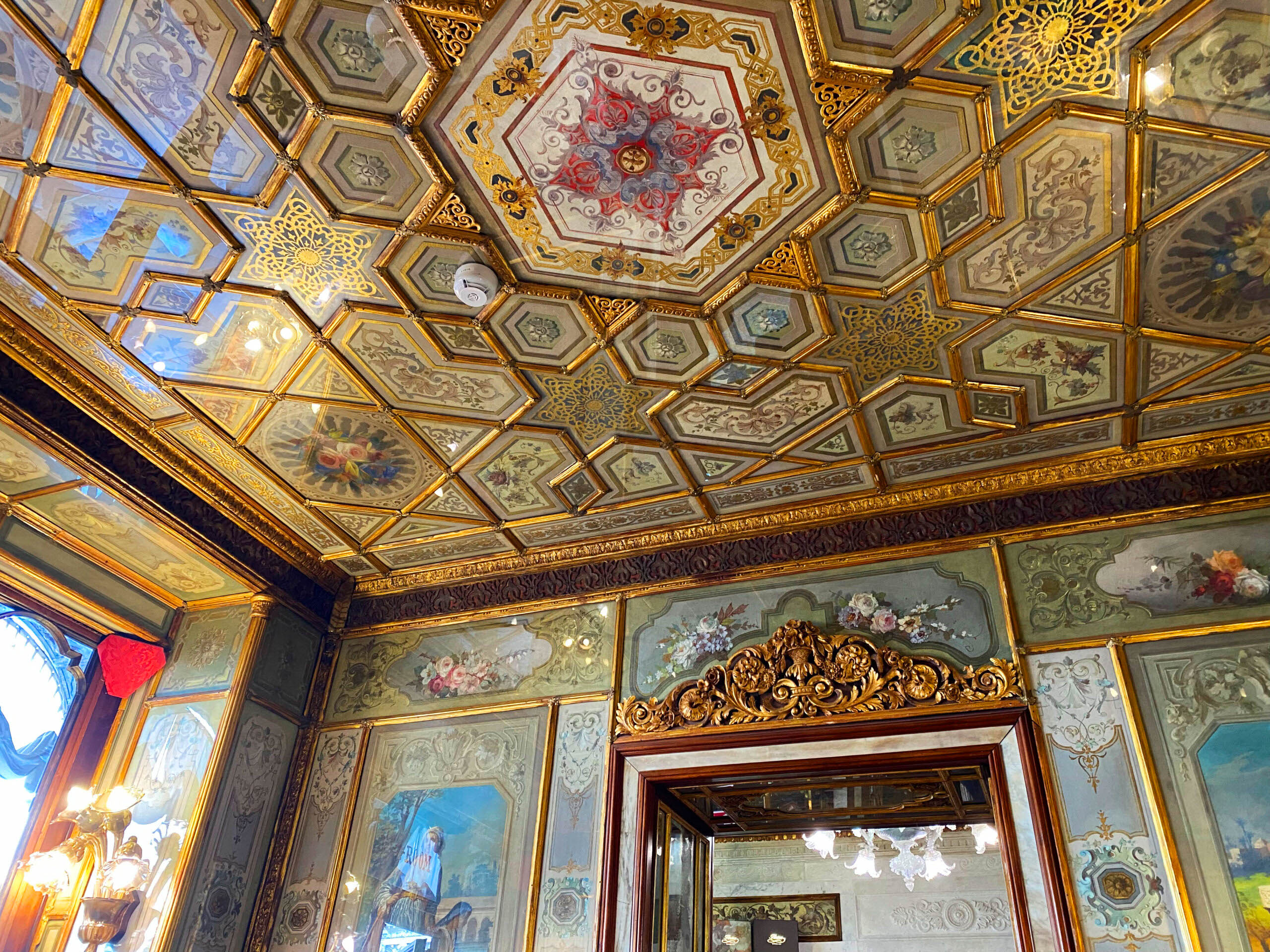
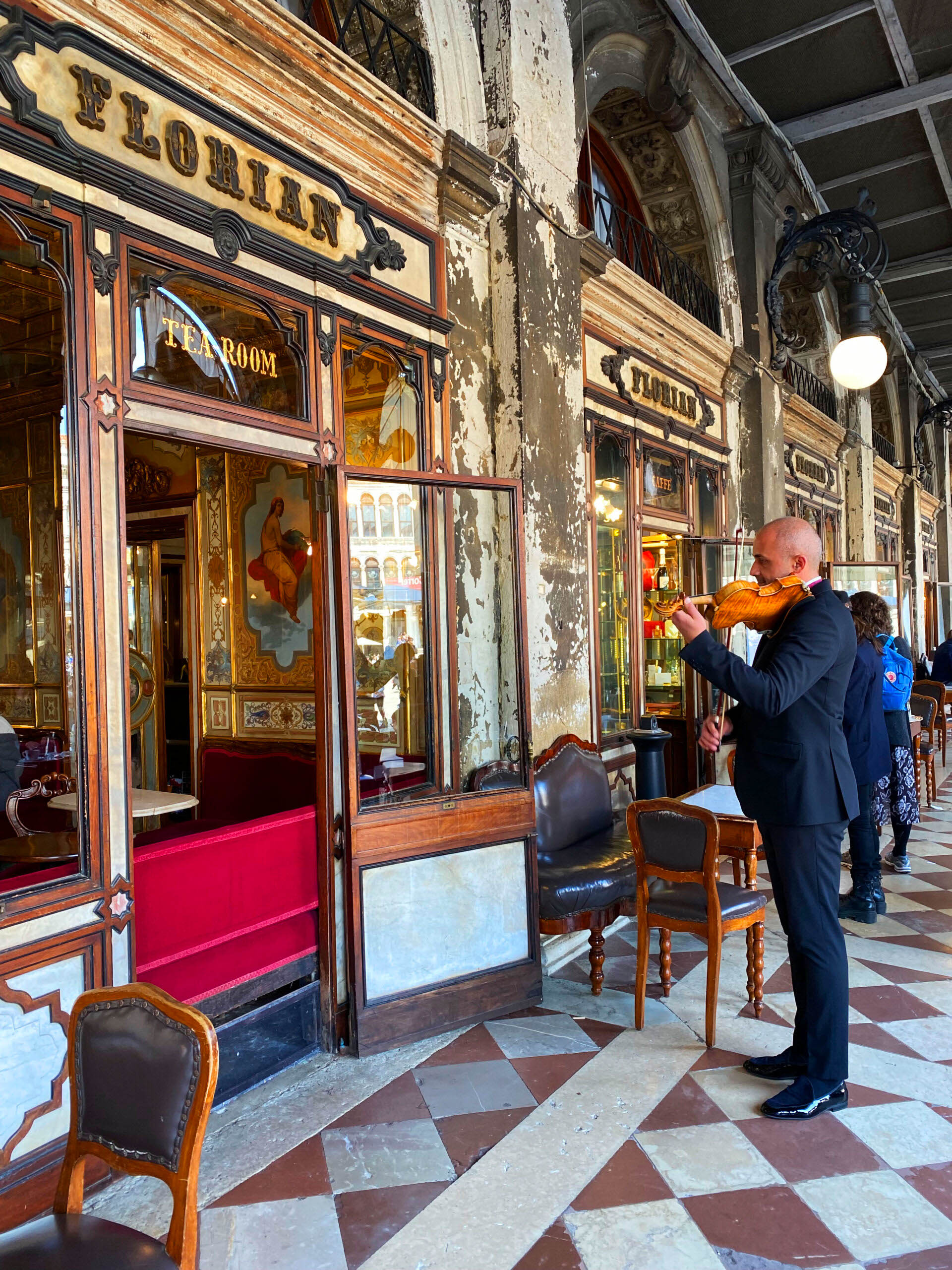
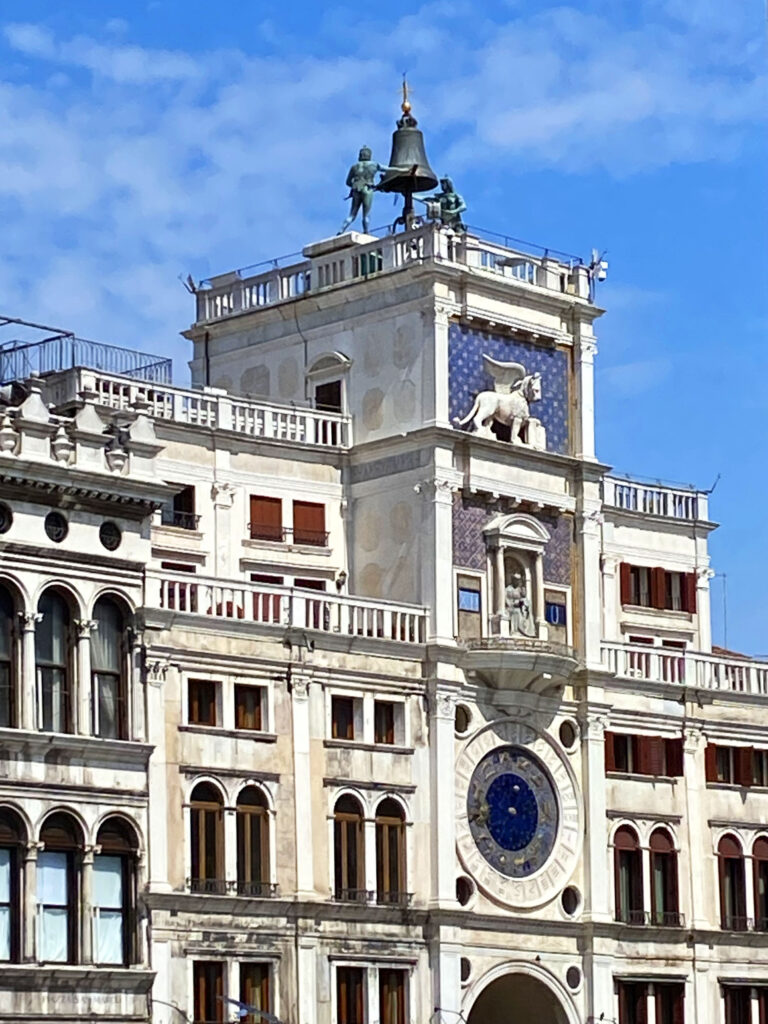
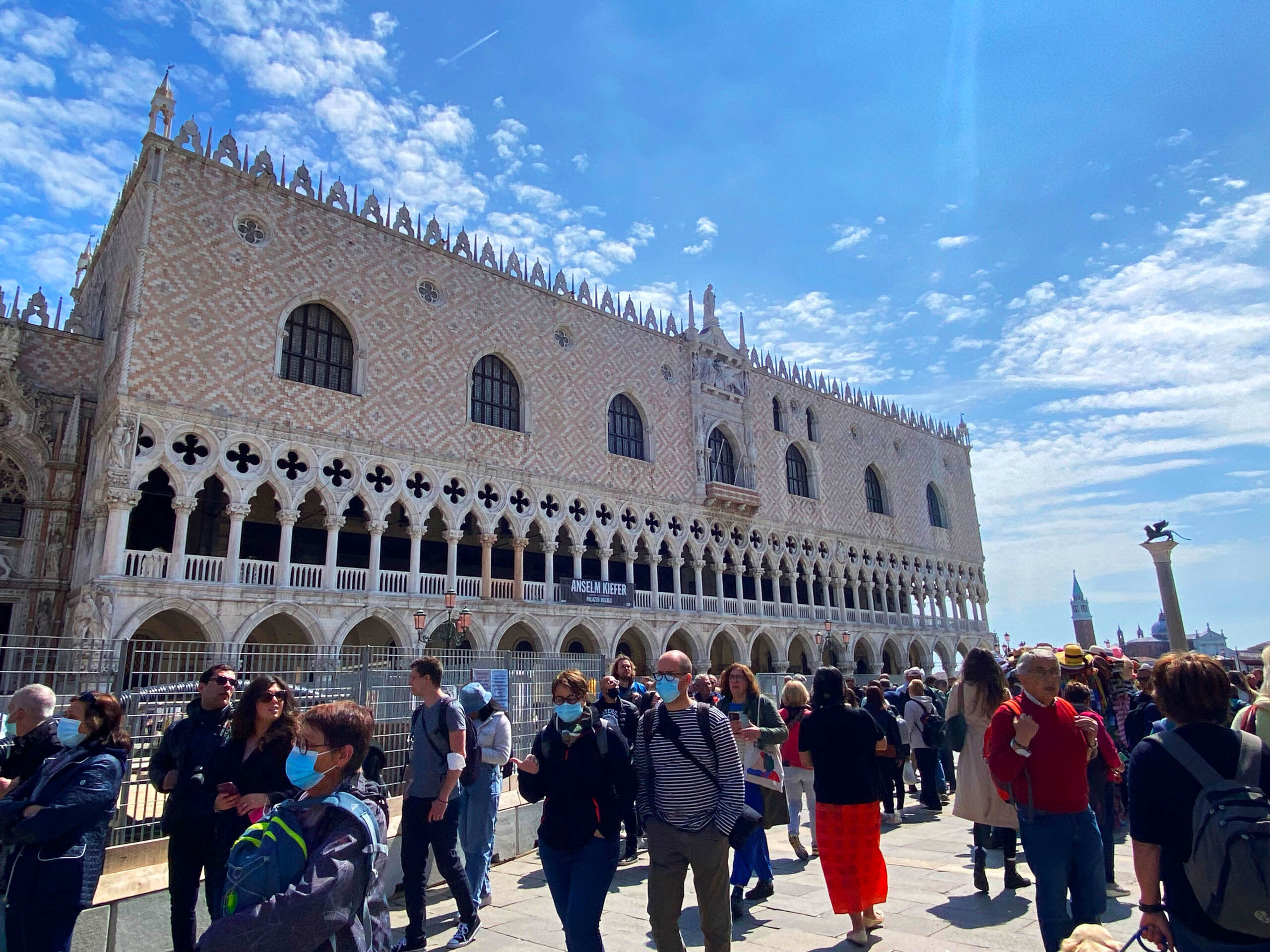
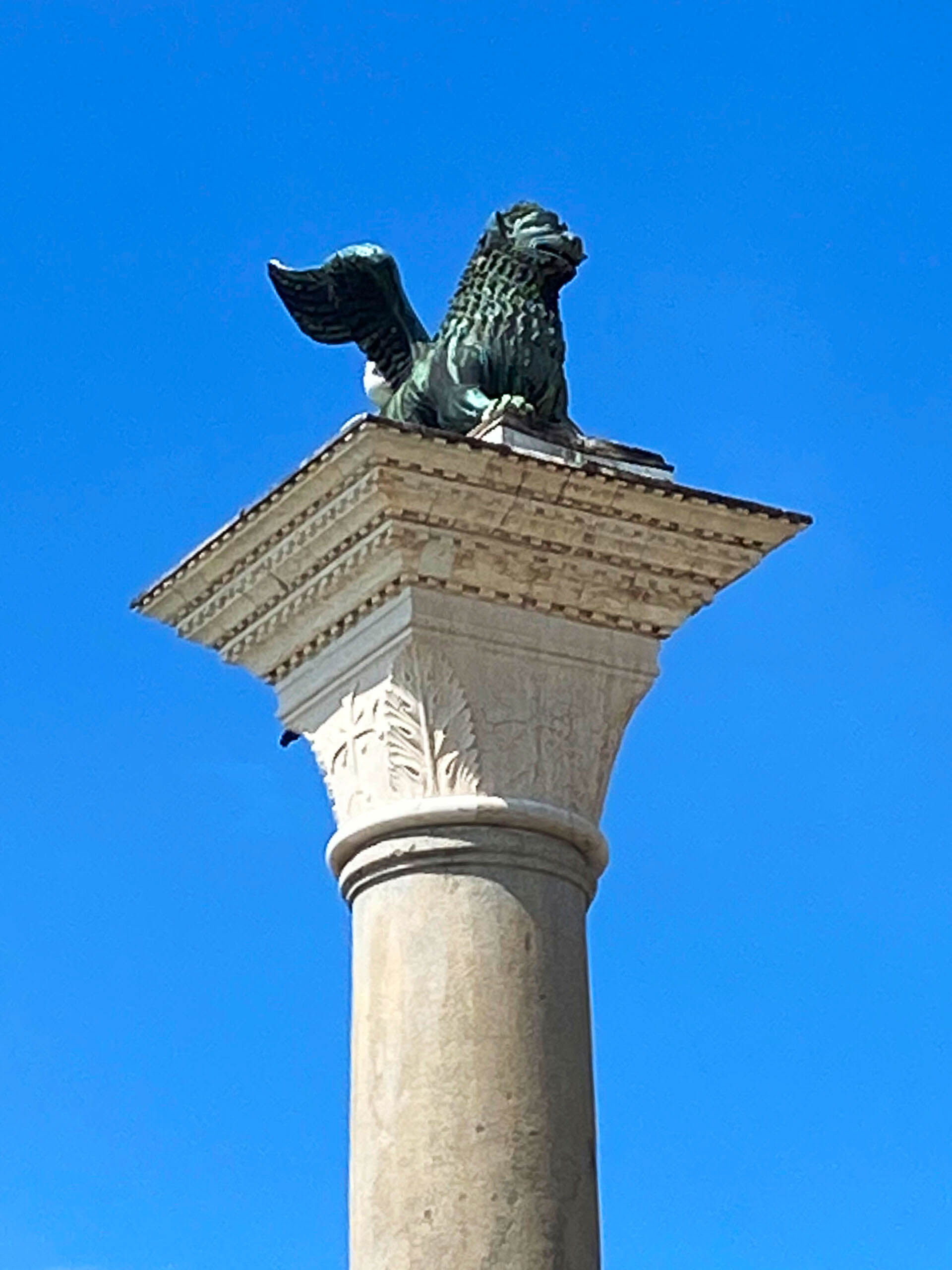
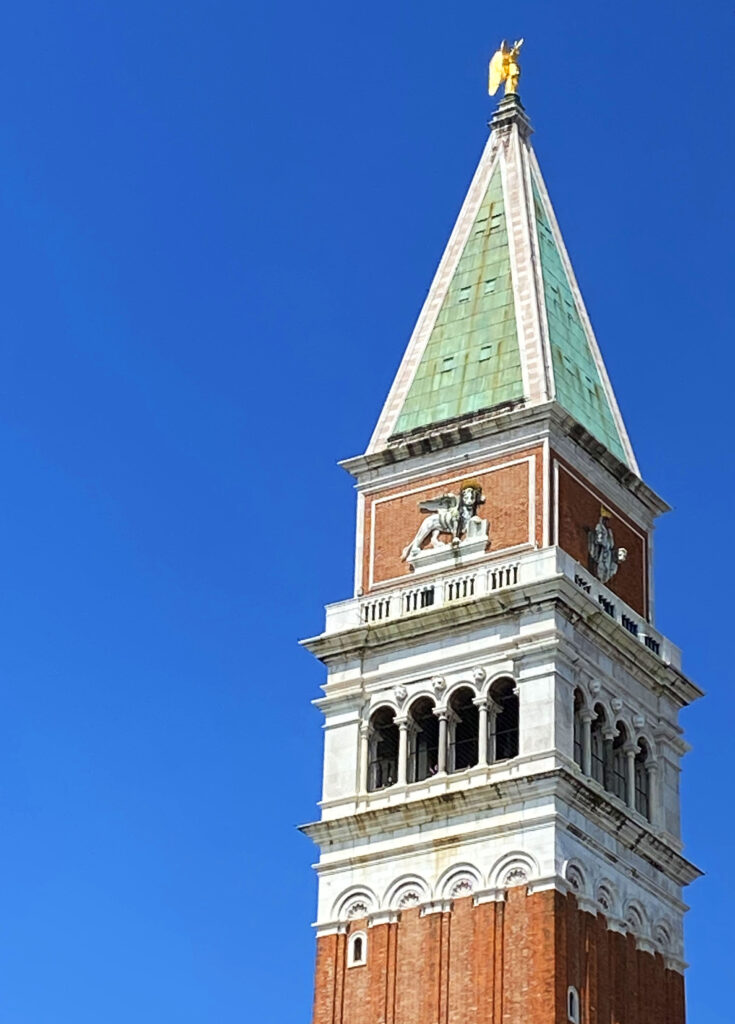
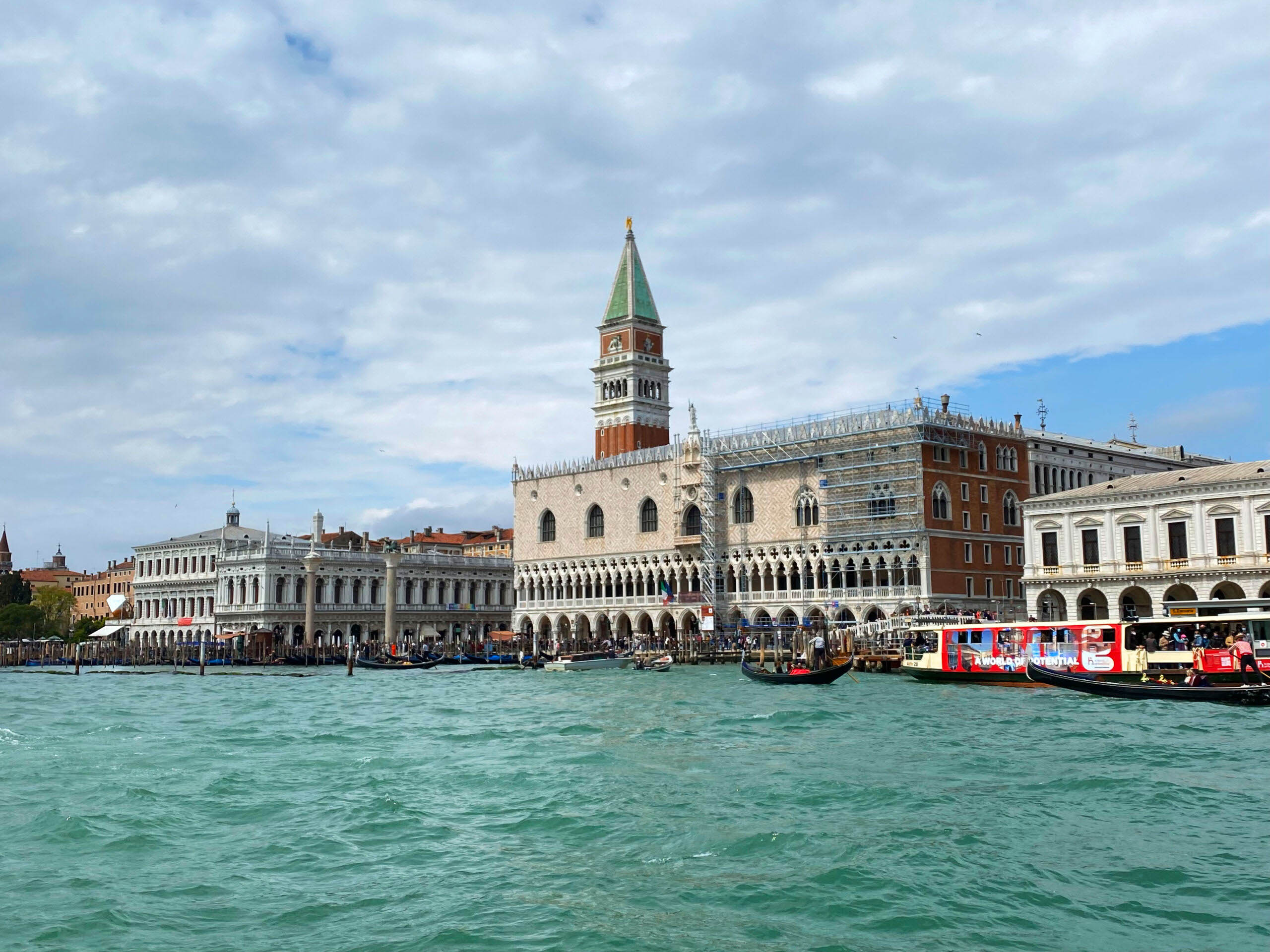
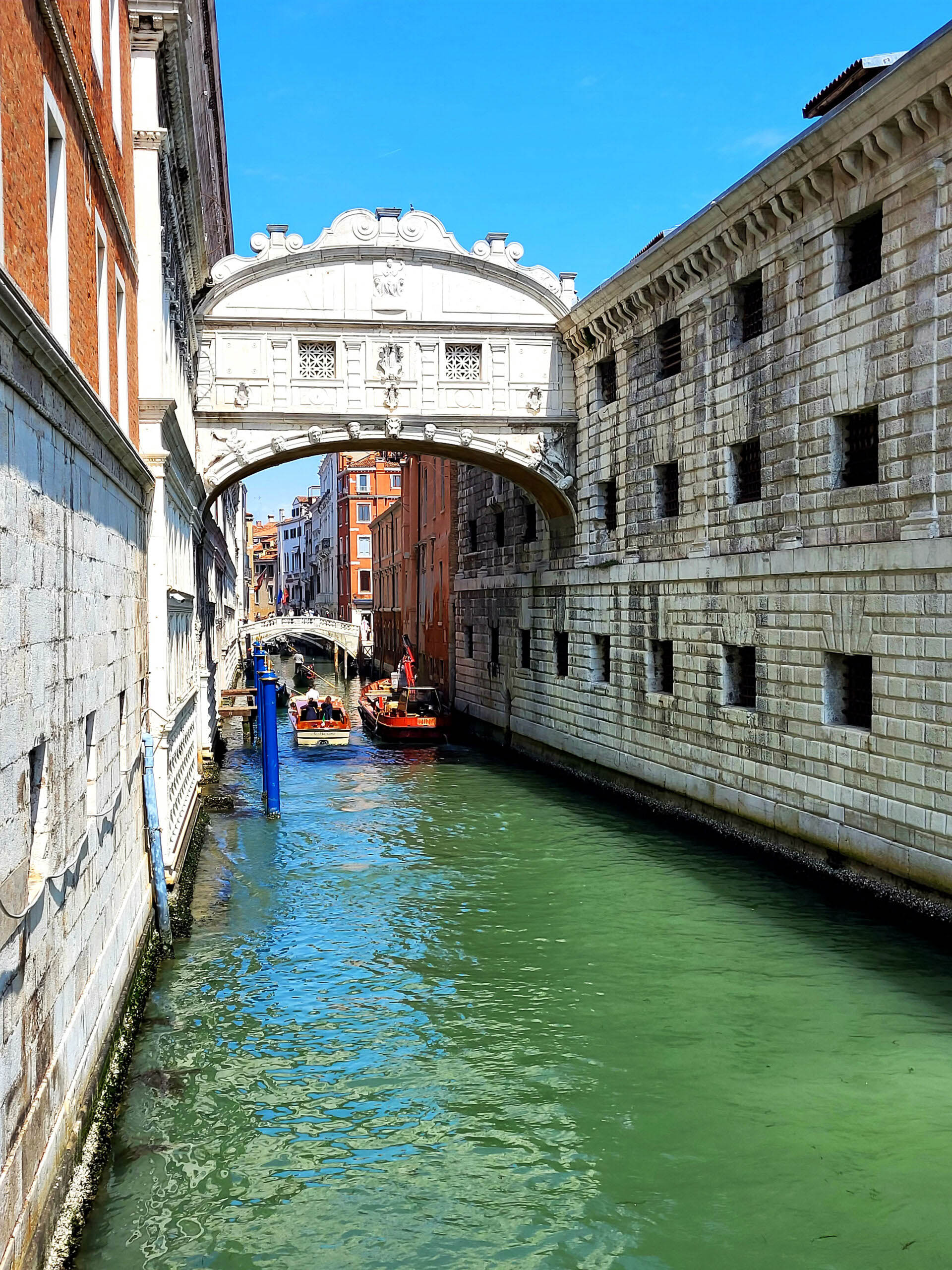
If you have some extra time, riding the water taxies and visiting the islands is a great way to experience the Venetian water culture. Check out The Venetian Island Hop for adventure ideas!
If you are looking for something more laid back, think about heading east of San Marco to the Castello district, a more laid back neighborhood where locals go. I would have loved to see Da Vinci’s Vitruvian Man at the Gallerie dell’Accademia in the Dorsoduro district, but it is only exposed to light and on display to the public every so often.

Leave a Reply